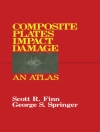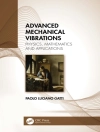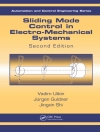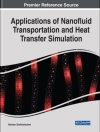Polymer-based fibre-reinforced composites FRC’s have now come out as a major class of structural materials being used or regarded as substituent’s for metals in several critical components in space, automotive and other industries (marine, and sports goods) owing to their low density, strength-weight ratio, and fatigue strength. FRC’s have several commercial as well as industrial applications ranging from aircraft, space, automotive, sporting goods, marine, and infrastructure. The above-mentioned applications of FRC’s clearly reveal that FRC’s have the potential to be used in a broad range of different engineering fields with the added advantages of low density, and resistance to corrosion compared to conventional metallic and ceramic composites. However, for scientists/researchers/R&D’s to fabricate FRC’s with such potential there should be careful and precise design followed by suitable process development based on properties like mechanical, physical, and thermal that are unique to each application. Hence the last few decades have witnessed considerable research on fibre reinforced composites. Fibre Reinforced Composites: Constituents, Compatibility, Perspectives and Applications presents a widespread all-inclusive review on fibre-reinforced composites ranging from the different types of processing techniques to chemical modification of the fibre surface to enhance the interfacial adhesion between the matrix and fibre and the structure-property relationship. It illustrates how high value composites can be produced by efficient and sustainable processing methods by selecting different constituents [fibres and resins]. Researchers in academia working in composites and accompanying areas [materials characterisation] and industrial manufacturers who need information on composite constituents and how they relate to each other for a certain application will find the book extremely useful when they need to make decisions about materials selection for their products. – Focuses on the different types of FRC’s that are currently available (e.g. from polymeric matrices to metallic and ceramic matrices, from carbon fibre to different types of natural fibres and from short to long fibre reinforced), their processing techniques, characterization of different properties, and how to improve the interfacial adhesion between an incompatible fibre and matrix and their applications- Looks at crisis areas such as how to incorporate incompatible fibres and matrices together (e.g. Non-polar polypropylene matrix is not compatible with that of polar natural fibres and hence suitable surface modifications are required to make them compatible with each other) along with low cost processing methods, low density and high strength- Uncovers clarifications to both elementary and practical problems related to the fabrication of FRCs- Schematic representations depicting the interaction between different fibre types and matrices will be provided in some chapters
Saritha Appukuttan & George Gejo
Fiber Reinforced Composites [EPUB ebook]
Constituents, Compatibility, Perspectives and Applications
Fiber Reinforced Composites [EPUB ebook]
Constituents, Compatibility, Perspectives and Applications
Köp den här e-boken och få 1 till GRATIS!
Språk Engelska ● Formatera EPUB ● ISBN 9780128210918 ● Redaktör Saritha Appukuttan & George Gejo ● Utgivare Elsevier Science ● Publicerad 2021 ● Nedladdningsbara 3 gånger ● Valuta EUR ● ID 7599633 ● Kopieringsskydd Adobe DRM
Kräver en DRM-kapabel e-läsare












